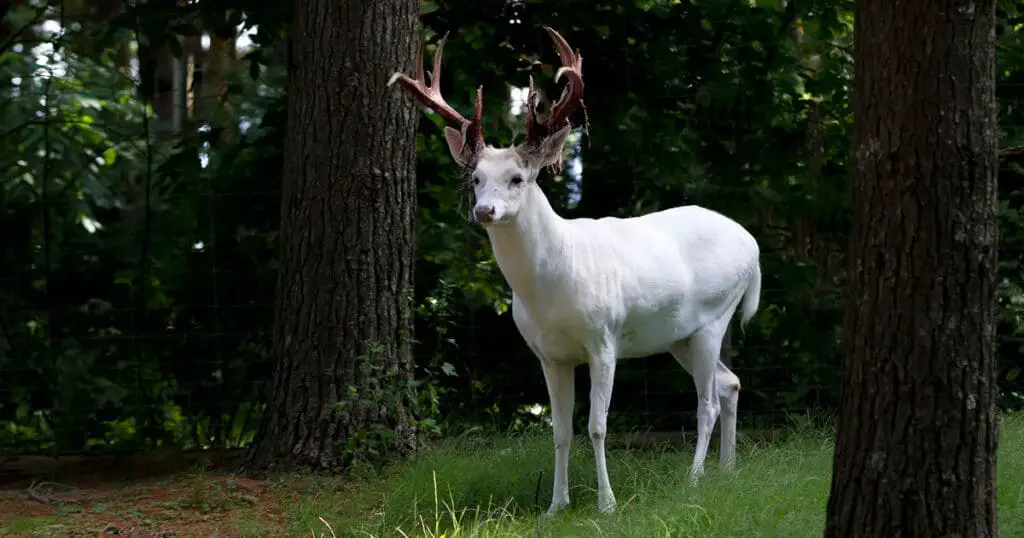Even some of the most ardent deer enthusiasts and hunters have never heard of the Seneca white deer herd. This unique group of deer boasts a beautiful white coat that makes it notable throughout the world. Keep reading to learn everything you need to know about this mysterious herd.
We’ll learn about the history of the Seneca white deer herd, as well as how this unique herd of deer is doing today in its upstate New York location. We’ll also explore the biological factors that created this predominantly white deer herd.
The History of the Seneca White Deer Herd
The Seneca white deer herd’s history stretches back to 1941. Humans were inadvertently instrumental in the creation of this unique group of deer.
In 1941, New York’s Seneca Army Depot in Seneca County enclosed 10,600 acres to create a compound where since then, we’ve seen this herd’s development.
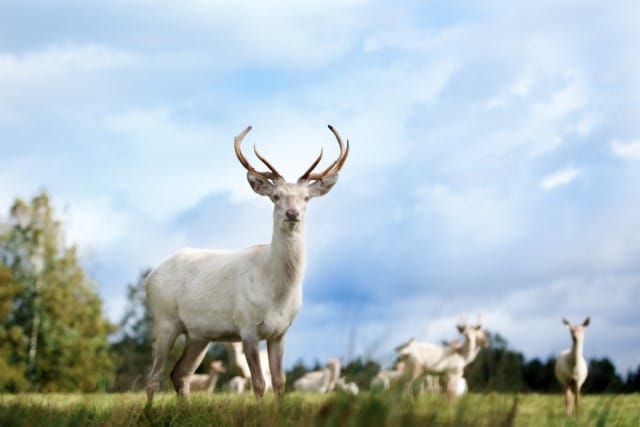
A fence positioned around the compound trapped in a deer population, keeping it separate from other deer in the area. This fence stretched 24 miles, and it was high enough that the deer inside the compound weren’t able to jump over.
While the compound’s number of deer was small at the beginning, it has obviously grown exponentially since then.
Some of the original deer on the compound carried recessive genes that create all-white coats. As inbreeding became common in this deer population, white coats became common. The white coat genes got stronger and stronger as time passed.
Some people believe the Seneca white deer herd is made up of albino deer, but this isn’t true. Leucism, not albinism, causes the white coat that is so common in this herd, and the white deer in the Seneca herd are actually leucistic deer.
The Seneca White Deer Herd is a Leucistic Deer Herd
The gene for leucism means that the deer’s fur doesn’t have any pigmentation. While deer usually have a coat in a shade of brown, deer with leucism lack the pigmentation to create that kind of coat.
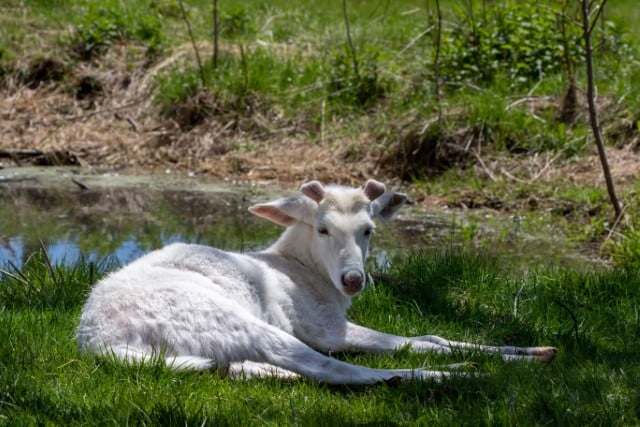
That is why their coats are completely white.
While leucism is a recessive gene, constant inbreeding in the Seneca white deer herd over several decades has made this herd mostly white-coated.
Are Seneca White Deer Always Completely White?
While deer with leucism, such as the ones in the Seneca white deer herd, are usually completely white, there can be some variations. For example, a leucistic deer may be only primarily white, with other markings.
Even completely white leucistic deer still have a black nose.
Leucism vs Albinism
One difference between a leucistic deer and an albino deer is that the albino deer has pink eyes. Leucistic deer like the ones in the Seneca white deer herd, on the other hand, have brown eyes like any other deer.
Albinism is much rarer than leucism.
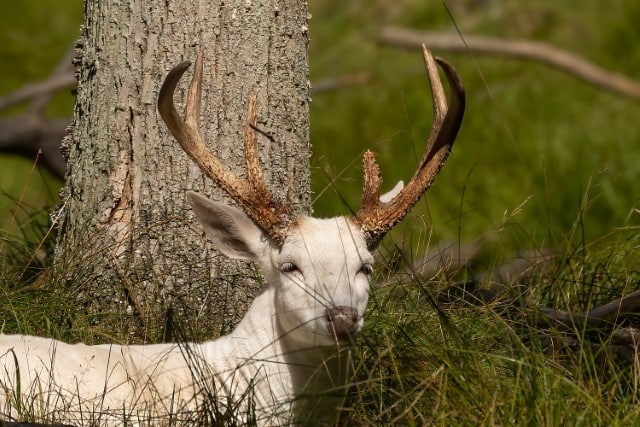
Overall, deer with leucism are healthier than albino deer. That is why leucistic deer tend to enjoy longer lives than deer with the albino trait.
One major disadvantage of any kind of white deer, however, is their difficulty with camouflaging themselves and hiding from predators in the wild.
Of course, this herd is protected, so they don’t have this challenge – a fact which may help to explain how the deer became more and more white over time.
Other Facts About the Seneca White Deer Herd
The fact the deer herd on the former Seneca Army Depot had become overwhelmingly white-coated was first noticed in the 1950s.
That was when the United States Army decided to keep this deer herd intact and protected.
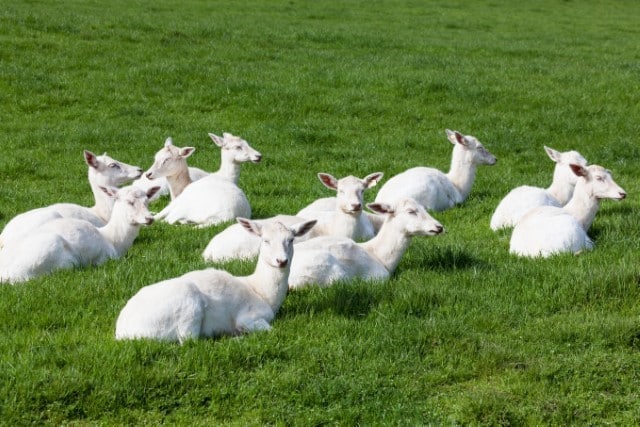
It was in 2000 that this property ceased being an army depot. It was transformed into Seneca White Deer, Inc., which is a conversation park devoted to the herd.
The property also holds a Cold War museum. Without question, the Seneca white deer herd preserve is a unique wildlife park with a fascinating heritage.
How is the Seneca White Deer Herd Doing Today?
The Seneca white deer herd is still thriving. However, the White Deer Tour program officially ended in 2019.
The Seneca White Deer, Inc., organization and Hobart and William Smith Colleges’ Finger Lakes Institute have established a special scholarship fund in honor of the herd and its preservation.
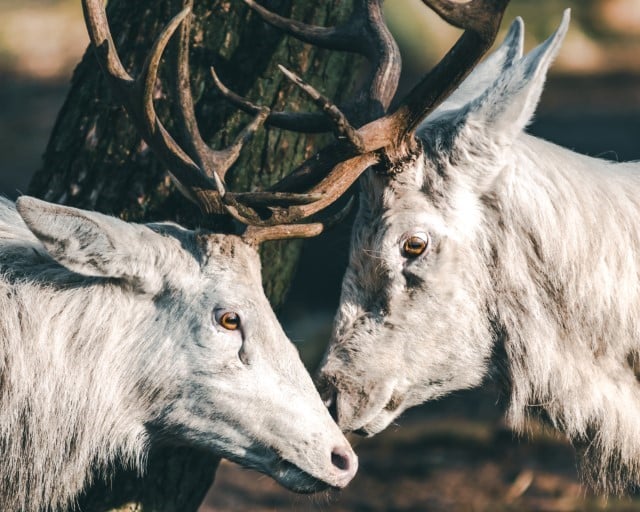
This herd is found in New York State towns called Varick and Romulus. They’re in the Finger Lakes Region.
The preserve spans an impressive 3,000 acres. Its deer herd is the largest herd of deer with visible leucism on the planet.
Are There Health Problems Associated with White-Coated Deer?
Remember that leucism is a recessive trait. Like many other such traits, it only becomes prevalent when there is inbreeding.
And inbreeding, in turn, is linked to many potential health problems. That is why a deer with leucism is more likely to have certain health problems than a deer without this condition.
Some problems commonly linked to leucism in animals include birth defects, such as a cleft palate and cross eyes.
Myths and Legends About White-Coated Deer
The recessive leucism gene exists in deer all over the world, so leucistic white deer do pop up in populations outside of the Seneca herd.
That is why we see the symbolism of white deer in myths and cultures around the globe.
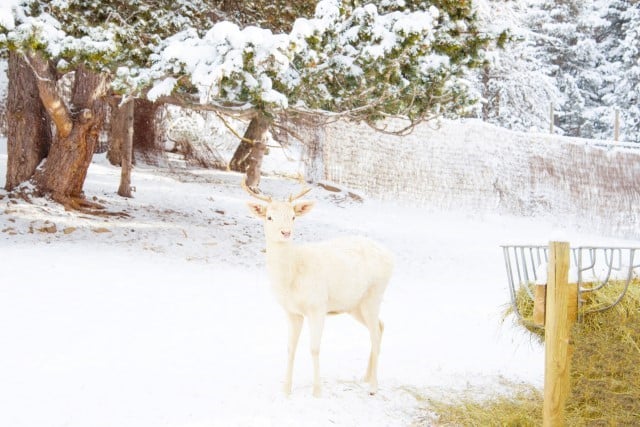
For example, there are white-coated deer in Asian, European, and Native American stories. We see white deer treated as magical creatures in European mythology.
White-coated deer seemed supernatural to people centuries ago with no understanding of genetics.
We’ve all heard of King Arthur and related Arthurian legends, a part of Celtic mythology. In that mythology, we see animals with white coats playing the parts of magical creatures.
For example, adventuring knights may see these animals as a sign from the fairies.
White deer also play a significant part in Native American culture. One story where this animal plays a starring role is called the Ghost of the White Deer, which is a Chickasaw story.
Another relevant myth is in the Lenape tradition.
Japan is yet another part of the world where white deer have played a part in myth and legend.
In 1282 in Japan’s Kamakura, there was a landmark called the Engakuji Temple that was established with the white deer in mind as a spiritual influence.
A specific Zen Buddhist sect called the Rinzai sect created this temple. Legend indicates that there was a white deer herd with spiritual significance that was nearby the temple.
Are White Deer an Endangered Species?
No, white deer aren’t an endangered species of deer. They aren’t actually a species separate from regular deer.
White deer are the same species as the other deer in your area, but they have either leucism or albinism.
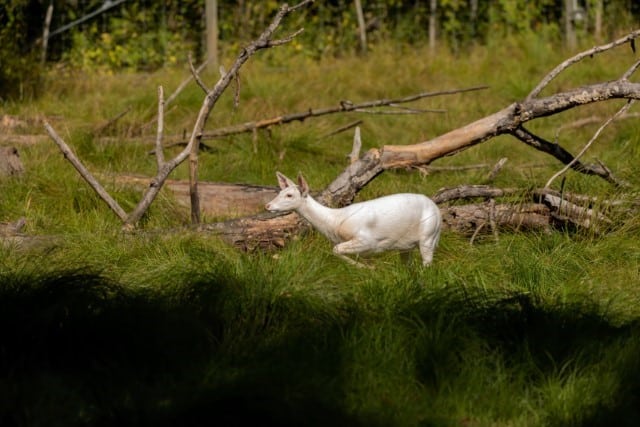
Seeing a white deer should be a rare occasion if the deer population in your area isn’t so isolated that there is excessive inbreeding.
In general, it can be considered normal to see leucism in between one and two percent of deer populations.
What Are Piebald Deer?
A piebald deer is a deer with both white and brown on its coat. For example, a piebald deer may have a mainly white body with numerous large brown patches or spots.
You only see piebald deer in deer with the leucism trait. An albino deer, on the other hand, will be completely white and have pink eyes.
Final Thoughts
While the white deer found in the Seneca White Deer reservation aren’t a separate species, they certainly make a unique group that is known all over the world.
Let’s review what we’ve learned here about the Seneca white deer herd:
- The history of the Seneca white deer herd
- Seneca white deer are leucistic deer
- Leucism is different from albinism
- The herd continues to thrive today
- Certain health problems can be connected to leucism
- White deer have inspired many myths and legends
- White deer aren’t a separate species
- Leucism can cause piebald deer as well as pure white deer

